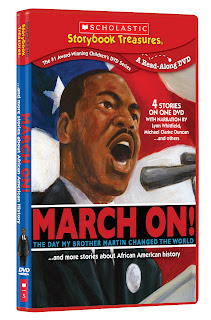
With technology allowing nearly 24-hour media access as children and teens go about their daily lives, the amount of time young people spend with entertainment media has risen dramatically, especially among minority youth, according to a study released today by the Kaiser Family Foundation. Today, 8-18 year-olds devote an average of 7 hours and 38 minutes (7:38) to using entertainment media across a typical day (more than 53 hours a week). And because they spend so much of that time ‘media multitasking’ (using more than one medium at a time), they actually manage to pack a total of 10 hours and 45 minutes (10:45) worth of media content into those 7½ hours.
The amount of time spent with media increased by an hour and seventeen minutes a day over the past five years, from 6:21 in 2004 to 7:38 today. And because of media multitasking, the total amount of media content consumed during that period has increased from 8:33 in 2004 to 10:45 today.
Generation M2: Media in the Lives of 8- to 18-Year-Olds is the third in a series of large-scale, nationally representative surveys by the Foundation about young people’s media use. It includes data from all three waves of the study (1999, 2004, and 2009), and is among the largest and most comprehensive publicly available sources of information about media use among American youth.
Mobile media driving increased consumption. The increase in media use is driven in large part by ready access to mobile devices like cell phones and iPods. Over the past five years, there has been a huge increase in ownership among 8- to 18-year-olds: from 39% to 66% for cell phones, and from 18% to 76% for iPods and other MP3 players. During this period, cell phones and iPods have become true multi-media devices: in fact, young people now spend more time listening to music, playing games, and watching TV on their cell phones (a total of :49 daily) than they spend talking on them (:33).
Parents and media rules. Only about three in ten young people say they have rules about how much time they can spend watching TV (28%) or playing video games (30%), and 36% say the same about using the computer. But when parents do set limits, children spend less time with media: those with any media rules consume nearly 3 hours less media per day (2:52) than those with no rules.
Media in the home. About two-thirds (64%) of young people say the TV is usually on during meals, and just under half (45%) say the TV is left on “most of the time” in their home, even if no one is watching. Seven in ten (71%) have a TV in their bedroom, and half (50%) have a console video game player in their room. Again, children in these TV-centric homes spend far more time watching: 1:30 more a day in homes where the TV is left on most of the time, and an hour more among those with a TV in their room.
“The amount of time young people spend with media has grown to where it’s even more than a full-time work week,” said Drew Altman, Ph.D., President and CEO of the Kaiser Family Foundation. “When children are spending this much time doing anything, we need to understand how it’s affecting them – for good and bad.”
Heavy media users report getting lower grades. While the study cannot establish a cause and effect relationship between media use and grades, there are differences between heavy and light media users in this regard. About half (47%) of heavy media users say they usually get fair or poor grades (mostly Cs or lower), compared to about a quarter (23%) of light users. These differences may or may not be influenced by their media use patterns. (Heavy users are the 21% of young people who consume more than 16 hours of media a day, and light users are the 17% of young people who consume less than 3 hours of media a day.)
Black and Hispanic children spend far more time with media than White children do. There are substantial differences in children’s media use between members of various ethnic and racial groups. Black and Hispanic children consume nearly 4½ hours more media daily (13:00 of total media exposure for Hispanics, 12:59 for Blacks, and 8:36 for Whites). Some of the largest differences are in TV viewing: Black children spend nearly 6 hours and Hispanics just under 5½ hours, compared to roughly 3½ hours a day for White youth. The only medium where there is no significant difference between these three groups is print. Differences by race/ethnicity remain even after controlling for other factors such as age, parents’ education, and single vs. two-parent homes. The racial disparity in media use has grown substantially over the past five years: for example, the gap between White and Black youth was just over two hours (2:12) in 2004, and has grown to more than four hours today (4:23).
Big changes in TV. For the first time over the course of the study, the amount of time spent watching regularly-scheduled TV declined, by 25 minutes a day (from 2004 to 2009). But the many new ways to watch TV–on the Internet, cell phones, and iPods–actually led to an increase in total TV consumption from 3:51 to 4:29 per day, including :24 of online viewing, :16 on iPods and other MP3 players, and :15 on cell phones. All told, 59% (2:39) of young people’s TV-viewing consists of live TV on a TV set, and 41% (1:50) is time-shifted, DVDs, online, or mobile.
“The bottom line is that all these advances in media technologies are making it even easier for young people to spend more and more time with media,” said Victoria Rideout, Foundation Vice President and director of the study. “It’s more important than ever that researchers, policymakers and parents stay on top of the impact it’s having on their lives.”
Popular new activities like social networking also contribute to increased media use. Top online activities include social networking (:22 a day), playing games (:17), and visiting video sites such as YouTube (:15). Three-quarters (74%) of all 7th-12th graders say they have a profile on a social networking site.
Types of media kids consume. Time spent with every medium other than movies and print increased over the past five years: :47 a day increase for music/audio, :38 for TV content, :27 for computers, and :24 for video games. TV remains the dominant type of media content consumed, at 4:29 a day, followed by music/audio at 2:31, computers at 1:29, video games at 1:13, print at :38, and movies at :25 a day.
High levels of media multitasking. High levels of media multitasking also contribute to the large amount of media young people consume each day. About 4 in 10 7th-12th graders say they use another medium “most” of the time they’re listening to music (43%), using a computer (40%), or watching TV (39%).
Additional findings:
* Reading. Over the past 5 years, time spent reading books remained steady at about :25 a day, but time with magazines and newspapers dropped (from :14 to :09 for magazines, and from :06 to :03 for newspapers). The proportion of young people who read a newspaper in a typical day dropped from 42% in 1999 to 23% in 2009. On the other hand, young people now spend an average of :02 a day reading magazines or newspapers online.
* Media and homework. About half of young people say they use media either “most” (31%) or “some” (25%) of the time they’re doing their homework.
* Rules about media content. Fewer than half of all 8- to 18-year-olds say they have rules about what TV shows they can watch (46%), video games they can play (30%), or music they’re allowed to listen to (26%). Half (52%) say they have rules about what they can do on the computer.
* Gender gap. Girls spend more time than boys using social networking sites (:25 vs. :19), listening to music (2:33 vs. 2:06), and reading (:43 vs. :33). Boys spend more time than girls playing console video games (:56 vs.: 14), computer games (:25 vs. :08), and going to video websites like YouTube (:17 vs. :12).
* Tweens and media. Media use increases substantially when children hit the 11-14 year-old age group, an increase of 1:22 with TV content, 1:14 with music, 1:00 using the computer, and :24 playing video games, for total media exposure of 11:53 per day (vs. 7:51 for 8-10 year-olds).
* Texting. 7th-12th graders report spending an average of 1:35 a day sending or receiving texts. (Time spent texting is not counted as media use in this study.)
The report, Generation M2: Media in the Lives of 8- to 18-Year-Olds, was released today at a forum in Washington, D.C. that featured the chairman of the Federal Communications Commission, media executives and child development experts. The report, related materials, and a live webcast are available online at http://www.kff.org/entmedia/mh012010pkg.cfm







